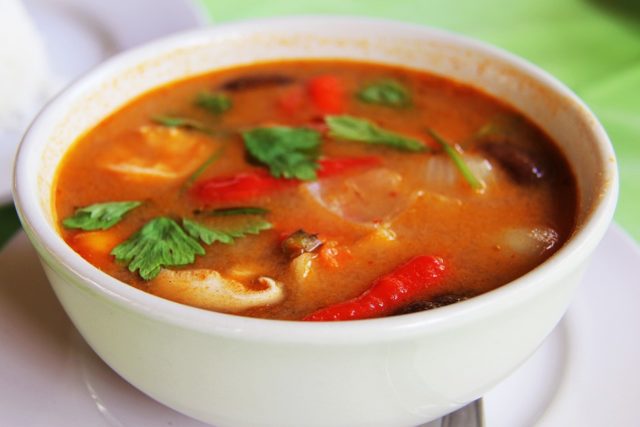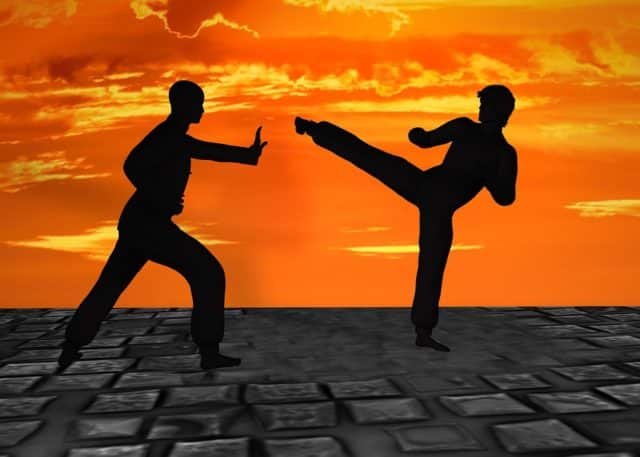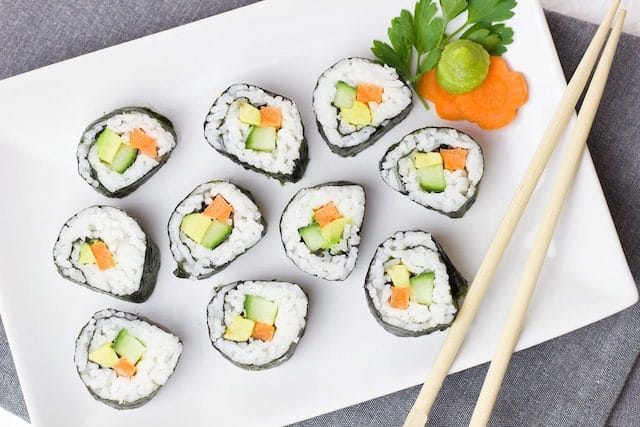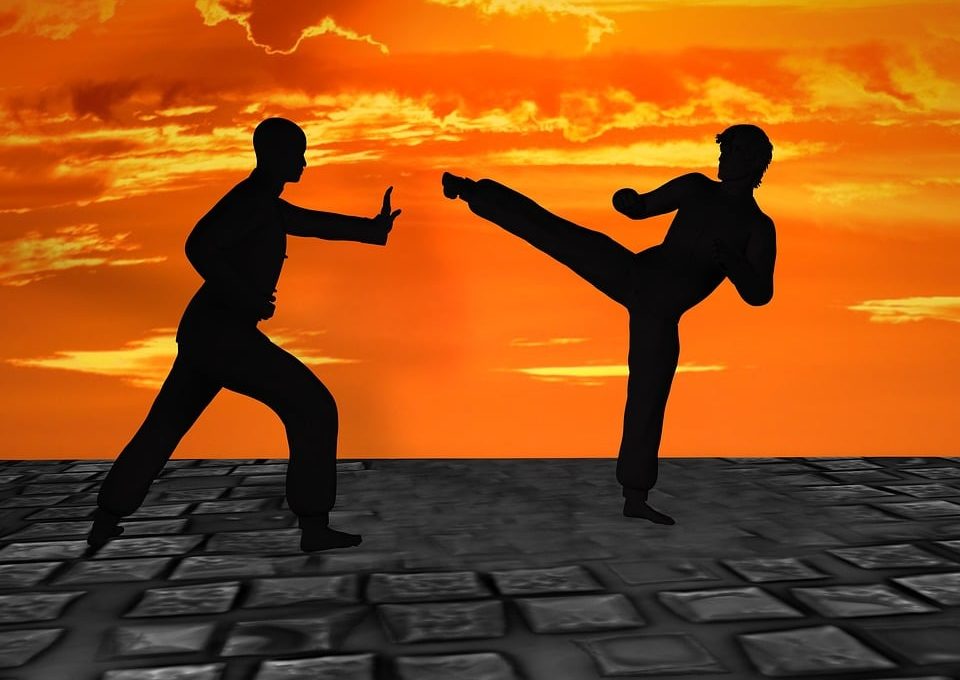Some days language can be very slippery. We can play fast and loose with the rules of language and grammar to the point that words can end up meaning completely different things over time, like how literally gradually came to mean the exact opposite. We also regularly make up new words as needed. Sometimes we say things that don’t mean what we thought they did. There are more than a few commonly used words and terms that most of us take for granted, but which are not really what we think they mean.
10. A nutritionist is not a real thing

Chances are you've read a news article or seen a segment on a show where a nutritionist quotes something health-related. Whether it's something nutritionistswould have ordered in a fast food restaurant, or foods that nutritionists say you should never eat , they get a lot of media coverage, sharing their expertise on which foods are good for you and which ones to avoid.
The irony of a nutritionist sharing his experience is that he may not actually have anything. In the US and Canada The term dietitian is virtually unregulated and does not mean anything specific. A dietitian must be trained and certified in their field and actually help treat illnesses through dietary management. However, anyone can call yourself a nutritionist and recommend any diet. There are organizations that can certify a dietitian, but this requirement is by no means legal throughout the country, so unless you check someone's credentials, those who claim to be dietitians could just as easily be bloggers with a passion for food rather than someone who is trained to understand nutrition and diet.
9. Curry means nothing

The most famous dish in all of Indian cuisine, there are probably few who haven’t tried curry or at least don’t know what it is. You can get a multitude of heat levels and an almost infinite number of ingredients in any given curry, from goat to lamb to vegetables and beyond. But what you may not know is that the word “curry” has a very loose definition, and what we in the Western world call curry doesn’t actually represent any true meaning of the word.
Let's start with the fact that we usually call curry two different things. One is "curry," which is the compound dish, and the other is curry in the form of a spice, a yellow powder that is most often associated with Indian food. But there are many types of curries and sauces, and the closest definition of what curry is might be a method of cooking using a hot sauce . But even that's not entirely accurate, because as we saw with the spice, it shouldn't refer to a sauce at all, even though that's what most people mean. So why use the word at all, and where does it come from?
In many ways, the word curry is a product of colonial thinking. Everything fell under the banner of curry because for these people it was alien and unusual, and it was a quick, lazy way to classify everything. Call it curry and be done with it. So while we technically think of curry today as a sauce or spice dish, the fact that it can apply to so many dishes shows that the definition was never really clear.
8. Kung Fu can refer to anything you practice

Back in the 1970s, there was a kung fu fever in America. TV show "Kung Fu" debuted in 1972, inexplicably starring David Carradine as a Shaolin monk, and a year later came the legendary "Enter the Dragon" Bruce Lee. Both men cemented kung fu as a popular action subgenre that still survives in the West today, thanks to films such as "Kung Fu Panda" .
Although it seems obvious that kung fu is a martial art like karate and taekwondo, and the characters in these movies become masters of kung fu, in the end, this is not entirely true. Kung fu, or gong fu, means " acquired skill "This refers to study and practice crafts that you can master through hard work. The martial art that most people refer to is probably Wu Shu.
A person who trains and masters martial arts is an absolute master of kung fu. But a person who trains to master basketball is also a master of kung fu. Like an artist, a doctor, or a gamer. If you dedicate yourself to being the best you can be, you've pretty much made it.
7. The quality of sushi or the quality of sashimi means nothing

People love sushi and sashimi, and in America the industry is worth 22 billion dollars , which is a bunch of tiny little buns. But you can't just make sushi out of any old thing; it takes a lot of skill to make it right. The right kind of rice, the right combination of other ingredients, and of course, sushi-grade fish. Or maybe not.
It turns out that "sushi class" is more like marketing term , than one that has some specific meaning. Basically, if something is labeled as "sushi grade," it means you can eat it raw . It does not reflect the quality or freshness of any particular fish at all, nor does it indicate that it is of higher quality than any fish that does not bear such a label. So frozen fish can easily qualify as sushi grade. If it is edible and meets the parasite-killing guarantee set by the USDA and the FDA, it is sushi grade.
The parasite-kill guarantee requires that raw food be handled in a way that kills any parasites. All raw fish except tuna must be handled this way. The fish must be stored at -20°C for 7 days or -35°C until it hardens, then for 15 hours, which is long enough to kill parasites. If you do this, your fish will pass the test and can be sold and eaten raw in the United States.
6. Ketchup is not a tomato sauce.

According to statistics, the average American consumes 5.2 liters ketchup a year. That seems like a respectable amount, and when you say it, everyone knows what you mean. Ketchup is a standard in the fast-food hamburger world, and is also often served with French fries and hot dogs. It's a sweet tomato sauce that Heinz sells 650 million bottles every year.
While ketchup means tomato sauce to almost everyone today, there is nothing in the definition of what ketchup is that requires it. Tomato ketchup is just one type of ketchup, but you can trace the condiment back to 300 B.C., while the tomato version has not appeared until 1812 .
Old-school ketchup originated in China, and the original recipes used fish guts and soya beans. In the UK, you can still find mushroom ketchup or just find a recipe online and make your own.
The name comes from ge-thcup or koe-cheup and spread from China via trade routes, allowing people in other countries to adapt the recipe to local ingredients. Older versions were made not only with fish and mushrooms, but also with nuts, celery, and fruit.
5. Guide dogs are not just guide dogs

Technological advances continue to make the world a more accessible place for people with disabilities, but one of the most easily recognizable aids that can be available to people who are blind or visually impaired is a guide dog. A guide dog can be an invaluable companion for many people with vision problems. However, the language used to refer to them can be a little confusing.
All guide dogs are seeing eye dogs, but not all seeing eye dogs are seeing eye dogs. Although it is not widely known among those who do not require their services, "seeing eye" is the name of an organization that trains certain dogs to be seeing eye dogs, and it is the oldest organization in the world that does this. Only dogs trained through their process are properly called guide dogs , the name is a registered trademark. They breed their own dogs for work, and only qualified trainers hire them to train them for work. But there are many other dog training organizations, and their dogs are referred to by the more general term "seeing eye dog."
4. Baby aspirin is not intended for children.

Chalk this misunderstanding up to poor planning and poor word choice, but baby aspirin is not intended for use in infants. Properly known as low dose aspirin , it refers to a pill that simply has less of the active ingredient, the drug has long been called a "baby" because it is a small dose, much like we have baby carrots or baby steps, when we just mean small. The problem is that people have started to take it literally.
In fact, children can have very adverse reaction to aspirin in the form of so-called Reye's syndrome. This is rare, but it does happen, so it should only be given on the advice of a doctor.
3. Bollywood does not refer to all Indian cinema

Hollywood is so dominant in film production that everyone knows exactly what you mean when you talk about Hollywood. Movies can be made anywhere and still be called Hollywood movies. Unless, of course, they are Bollywood.
For most people in the West, Bollywood refers to Indian films. This may also include the stereotype that you sing and dance a lot. But that's not the whole story. For starters, Bollywood cinema is Indian cinema, but Indian cinema is not necessarily Bollywood. Bollywood is a combination of Hollywood and Bombay, not known as Mumbai. In this region he produces hindi movies . This is one of many "forests" , which now exist in India and Pakistan.
Pollywood is a term that refers to the Punjabi film industry, Lollywood refers to Pakistani films made in Lahore, and then there is Chollywood, Ollywood, Kollywood, Tollywood, Mollywood, Dhaliwood and maybe a dozen more.
2. Technically, death by electrocution refers only to death by electricity.

If you were wiring your home and accidentally touched a live wire that gave you an electric shock, would you say you were electrocuted? These days, that's the standard term that almost everyone uses when talking about being electrocuted. You'll see the word on safety signs and even on government websites. Strictly speaking, the word refers to deaths by electricity , not just from electric shocks. It's a combination of "electricity" and "execution," and it was coined shortly before the first execution by electric chair, during the dark furor over the battle between alternating current and direct current, when Thomas Edison publicly electrocuted animals to prove that direct current was safer.
However, the word quickly came into common use because as electricity spread among ordinary people, anyone who suffered from non-fatal electric shocks, a word was needed to describe their experience, and "death by electrocution" was there.
1. Military rank means nothing

Much like “sushi grade” is a marketing term, when you see something advertised as military grade, there’s a good chance that those words don’t mean anything either. The company using the term clearly wants you to think that the product is tough and durable, maybe tougher than similar products, and can withstand a war zone, but it’s not.
Even military-approved products don't actually have to meet a lot of strict rules , when it comes to how they're made, so a company that doesn't work for the military is unlikely to push the boundaries here. Military standards were intended only to provide cheap and effective products that worked but didn't cost a fortune.














Оставить Комментарий